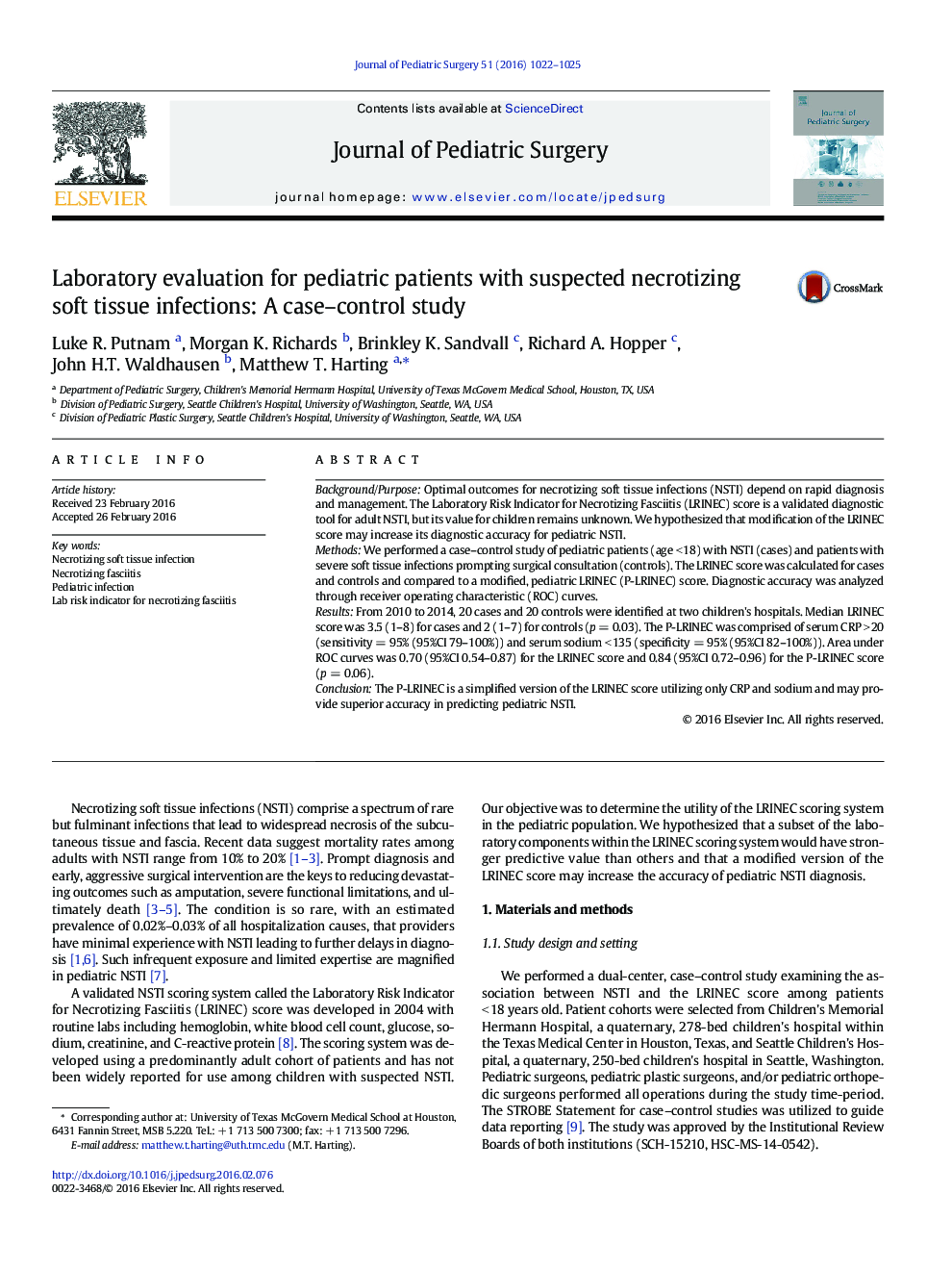| Article ID | Journal | Published Year | Pages | File Type |
|---|---|---|---|---|
| 4154928 | Journal of Pediatric Surgery | 2016 | 4 Pages |
Background/PurposeOptimal outcomes for necrotizing soft tissue infections (NSTI) depend on rapid diagnosis and management. The Laboratory Risk Indicator for Necrotizing Fasciitis (LRINEC) score is a validated diagnostic tool for adult NSTI, but its value for children remains unknown. We hypothesized that modification of the LRINEC score may increase its diagnostic accuracy for pediatric NSTI.MethodsWe performed a case–control study of pediatric patients (age < 18) with NSTI (cases) and patients with severe soft tissue infections prompting surgical consultation (controls). The LRINEC score was calculated for cases and controls and compared to a modified, pediatric LRINEC (P-LRINEC) score. Diagnostic accuracy was analyzed through receiver operating characteristic (ROC) curves.ResultsFrom 2010 to 2014, 20 cases and 20 controls were identified at two children's hospitals. Median LRINEC score was 3.5 (1–8) for cases and 2 (1–7) for controls (p = 0.03). The P-LRINEC was comprised of serum CRP > 20 (sensitivity = 95% (95%CI 79–100%)) and serum sodium < 135 (specificity = 95% (95%CI 82–100%)). Area under ROC curves was 0.70 (95%CI 0.54–0.87) for the LRINEC score and 0.84 (95%CI 0.72–0.96) for the P-LRINEC score (p = 0.06).ConclusionThe P-LRINEC is a simplified version of the LRINEC score utilizing only CRP and sodium and may provide superior accuracy in predicting pediatric NSTI.
